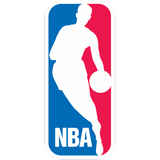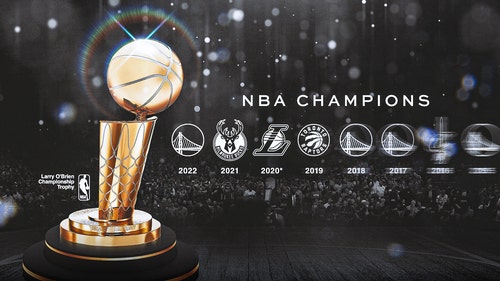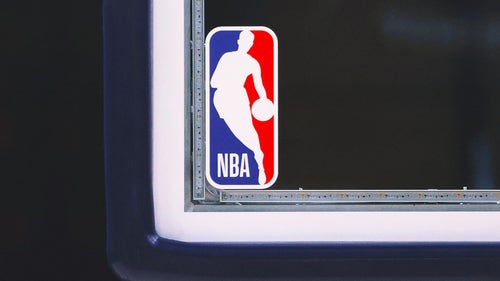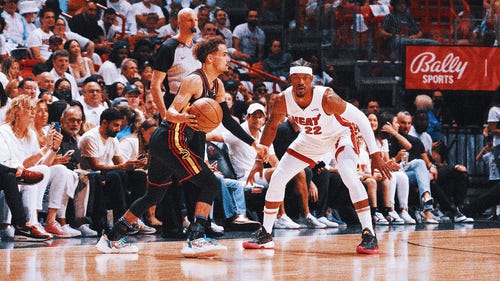
Utah Jazz: 5 options for pick No. 30 in 2017 NBA Draft

Utah Jazz
Feb 4, 2017; Syracuse, NY, USA; Syracuse Orange forward Tyler Lydon (20) shoots the ball against the Virginia Cavaliers during the second half at the Carrier Dome. The Orange won 66-62. Mandatory Credit: Rich Barnes-USA TODAY Sports
The Utah Jazz have four picks in the 2017 NBA Draft, one being the last pick in the first round. Here are five options for the front office to consider at No. 30 on draft night.
The Utah Jazz will be on the board in quick succession on draft night. After they make their selection with their 24th pick of the 2017 NBA Draft, the Jazz will be again on the clock with the 30th pick via the Golden State Warriors.
The 30th pick arrives as a result of the trade that brought, Andris Biedrins, Richard Jefferson and Brandon Rush to Utah in 2013.
With it, the Jazz have an opportunity to pick up a cheap contract and roll the dice on a player they will hope can have an impact in the NBA sooner rather than later.
After winning 51 games, the Jazz have their sights set on more in 2017-18 after injuries halted what would have been a realistic quest for 60.
The key to their elevation and, in turn, sustained success, is drafting well. With Rudy Gobert locked up until the end of the 2020-21 season and Gordon Hayward expected to be around for a similar length of time, Utah has its star players on big money locked in. The value they get from upcoming drafts will determine how much help Hayward and Gobert get and at what cost.
Jimmy Butler was selected with the 30th pick of the 2011 NBA Draft, so there's hope yet that the Jazz find their next superstar at the bottom end of the first round come June 22.

Mandatory Credit: Kyle Terada-USA TODAY Sports
5. Jordan Bell, PF, Oregon
DraftExpress has Bell going at No. 35 to the Orlando Magic, but the Jazz have already shown interest by having him in for a pre-draft workout.
He's a defensive powerhouse with his elite athletic ability, making him a legit shot-blocker despite standing at 6'9″. Away from the basket, Bell can switch the pick-and-roll with his effort making him difficult for smaller guards to get by on the perimeter.
Bell isn't a dangerous scorer, averaging 11 points per game with Oregon last season, but he's showing signs of improvement.
During his workout, Bell asked to be a part of an intense shooting drill that impressed Perrin, telling Desert News Sport:
"Still has a ways to go, but it was encouraging that he wanted to shoot."
Jordan Bell: Oregon, Big, 6'9", 224 lbs
Pre-Draft Workout 6.5.17
????: https://t.co/GEdr5IulyT pic.twitter.com/cMxQxJ0RbM
— Utah Jazz (@utahjazz) June 5, 2017
Bell knows his offensive limitations don't translate well in today's long range NBA, but he is determined to improve, admitting to Desert News Sport:
"Just finding ways to score in the NBA. Shot's definitely improved a lot. I'm getting more confident in just shooting the ball."
The Jazz pride themselves on their defense, so adding Bell will no doubt be a possibility, but he might be more of an option if he's still on the board when the Jazz pick again at 42.

Mandatory Credit: Brett Rojo-USA TODAY Sports
4. Johnathan Motley, PF/C, Baylor
Another athletic and long prospect, the Jazz will be keeping an eye on Motley who DraftExpress expect to go 38th to the Chicago Bulls.
His potential to score the ball in the NBA is evident in his length. At 6'9″ with a 7'4″ wingspan and 9'0″ standing reach, Motley finished in the 82nd percentile in shots around with rim at 62.1 percent, scoring 17.2 points per game. What's most impressive is he did so even with his poor perimeter shooting.
DraftExpress note his potential to improve further:
"With the increased importance in perimeter-oriented skills among modern NBA bigs, Motley becomes an intriguing prospect in that he has shooting potential and the ability to put the ball on the floor in a straight line."
One of Motley's biggest strengths is his offensive potential, but as an emotional and hustle-style player, he can be a reliable defender. Averaging 9.9 rebounds and 1.1 blocks per game, Motley fits the mold of the undersized, small-ball center position that is steadily growing in popularity.
Johnathan Motley of @BaylorMBB shooting the ball really well in the mid-range at his Pro Day in LA. pic.twitter.com/UtYZAbg7t3
— Jonathan Givony (@DraftExpress) June 3, 2017
For a team like the Jazz, it might not be the ideal fit.
With a tendency to rely on size and length, the option of a small-ball center might not be of any interest but should the Jazz opt for the undersized option, Motley is an ideal rookie candidate.

Mandatory Credit: Bob Donnan-USA TODAY Sports
3. Tony Bradley, C, UNC
Tony Bradley's stock is on the rise.
Falling to the 42nd pick (Jazz) in the first DraftExpress Mock Draft since opting in, Bradley has been steadily moving up the class. He was most recently listed as going 32nd to the Phoenix Suns but will be an option for the Jazz at No. 30.
At 6'10" with a 7'4″ wingspan, Bradley has the physical tools to compete in the NBA, and at just 19 years old, there is still some time for growth.
Originally thought to be remaining at UNC before opting into the 2018 NBA Draft, Bradley instead came out a year earlier than expected. With sights set on the first round, the Jazz might hold the key with ESPN's Chad Ford having Bradley as high as 24th in his mock draft — another Jazz pick.
Nine jumpers in a row from Tony Bradley. pic.twitter.com/4Dg8GlSeeW
— Jonathan Givony (@DraftExpress) June 2, 2017
If he can start to reach his potential quickly and have an immediate impact in the NBA, Bradley could be a viable backup for Rudy Gobert, with DraftExpress describing him as:
"Strong and mobile, he competes on both ends, he doesn't play outside of himself, and he has nice touch on the interior. Bradley can finish with either hand on the interior, has a nice jump hook game for this level of his development, and really knows how to use his body against more athletic bigs."
Bradley might be a bit more of a risk than other players available at the tail-end of the first round. Serviceable bigs are a commodity in the NBA, and his fit for the Jazz appears perfect.
He looks like a risk worth taking.

Jan 28, 2017; Boulder, CO, USA; Colorado Buffaloes guard Derrick White (21) reacts after a play in the second half against the Oregon Ducks at Coors Events Center. The Buffaloes defeated the Ducks 74-65. Mandatory Credit: Isaiah J. Downing-USA TODAY Sports
2. Derrick White, PG/SG, Colorado
Derrick White's path to a possible NBA career is what dreams are made of and may factor into the decision making of the Jazz front office on draft night.
Without a single Division I offer coming out of high school, White played out three seasons in Division II before being picked up by Colorado. His drive and determination then saw him use his red-shirt year with the Buffaloes to fine-tune his craft.
The result? Numbers of 18.3 points, 4.3 assists and 4.1 rebounds per game while shooting 57 percent from the floor and 41 percent from beyond the arc.
At 23 years old when the 2017-18 season opens, White's upside will be considerably limited, but his immediate impact for a team will be intriguing.
Mike Schmitz and Matt Kamalsky of DraftExpress describe White as:
"An opportunistic scorer with a strong feel for the game, White isn't overly explosive with the ball in his hands, but is a patient playmaker whose size, shot making ability from all three levels, and knack for letting the game come to him made him very effective last season."
Sound familiar?
White's likeness to Jazz fan favorite Joe Ingles will surely gain the Colorado guard some traction when the 30th pick in the draft comes around.
With Shelvin Mack likely leaving Utah, there is an open guard spot available that White could fill with his three-point shooting alone.

Portland Trail Blazers
Mandatory Credit: Brad Penner-USA TODAY Sports
1. Tyler Lydon, SF/PF, Syracuse
Lydon is a big body at 6'10" and 215 pounds, with the ability to stretch the floor at the forward spot. His 39.2 percent three-point shooting can help an NBA team right away with the Jazz eager to pick up a stretch-4 option.
His athleticism and willingness to attack the basket made him a lob option at Syracuse along with his ability to put back wayward shots after earning the offensive rebound.
The athleticism he has displayed isn't otherworldly, but his feel for the game allows him to maximize all that he does have as he can get himself to areas of the floor, where he then has the time and space to execute.
There has been some debate as to whether Lydon is strictly a power forward at the NBA level, or if he has the tools to drop down to small forward.
Jazz's VP of player personnel, Walt Perrin, told Desert News Sports after Lydon's workout with the franchise he sees him more of a 4 than a 3:
"Can he be a stretch-4? Yes. Can he play 3? He's got work to do if he's going to be able to play 3. He's got some work to do defensively to be able to guard a 4, or especially a 3. That'd be real tough for him probably right now."
Lydon's ability to regularly catch lobs fits in with the Gobert style of play the Jazz have used to dominate in the past, but it's his long range shooting that's most intriguing.
With Trey Lyles underwhelming in 2016-17, the addition of Lydon would provide Lyles with some direct competition.
More from Hoops Habit
This article originally appeared on








